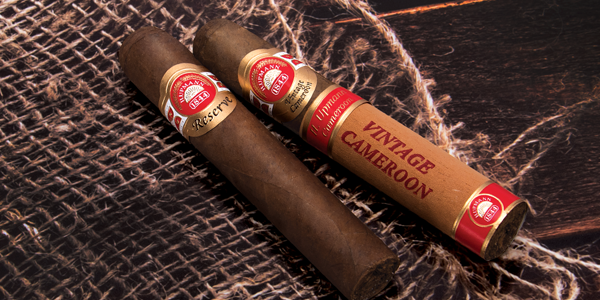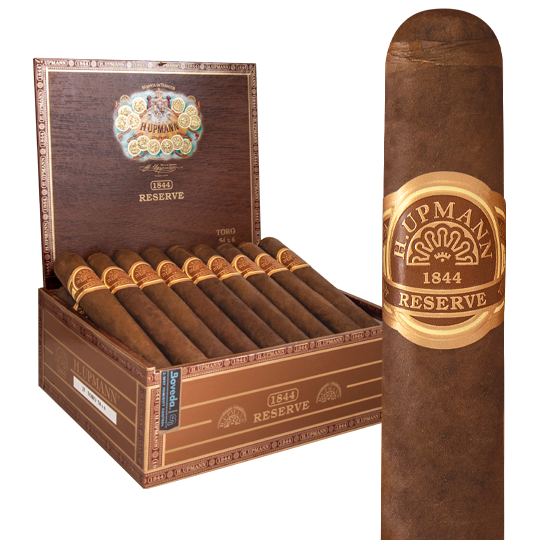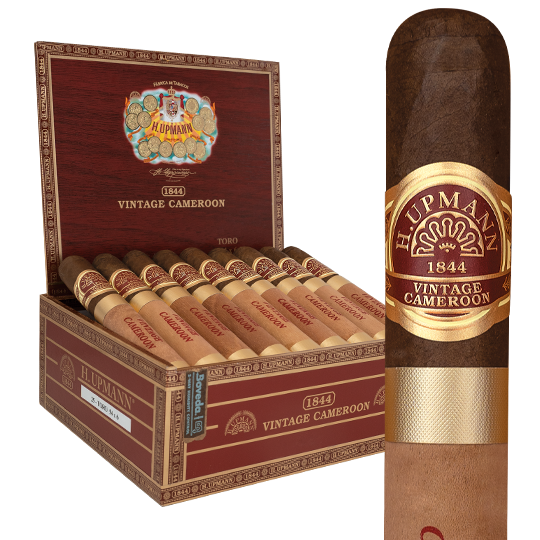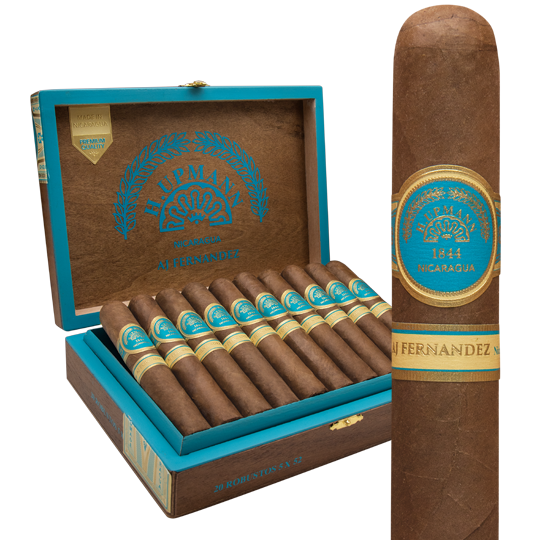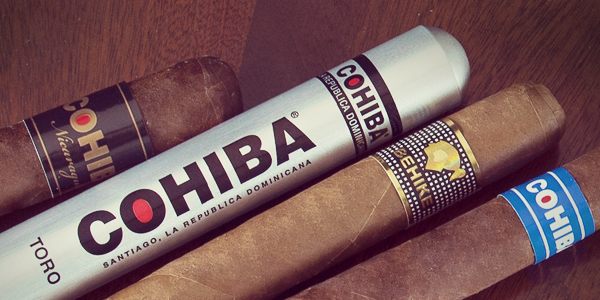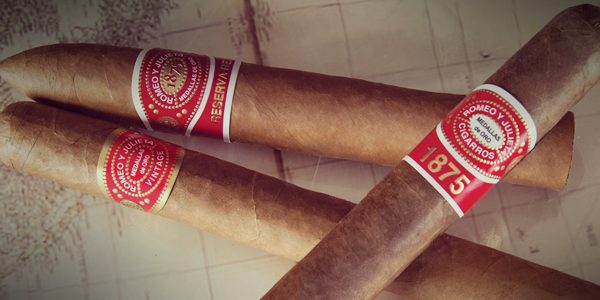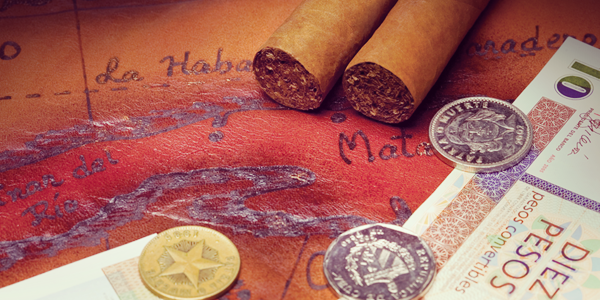History of H. Upmann Cigars
Legacy. Innovation. Espionage. Which of these doesn’t fit a usual discussion of cigars? Well, yeah, espionage. When the topic is H. Upmann, however, that’s part of a long and distinguished, if somewhat tarnished history of one of the oldest Cuban cigar brands. Oldest is the legacy part.
In 1843, a German banker by the name of Hermann Dietrich Upmann landed in Havana. He was there to set up a business for a German import/export company. Upmann saw potential. Along with establishing a banking business catering to tobacco dealers and manufacturers, Upmann bought a local cigar factory and the first ‘H. Upmann’ cigar brand was born in 1844. Hermann worked until 1890 and was succeeded by his nephew, Heinrich. The nephew, with partners, ran the business operations until he died in 1914, having moved the cigar-making into a larger facility at the turn of the century. Hermann was succeeded by his nephews, Hermann and Alberto Upmann (yes, you’ll have to keep your ‘Hermanns’ straight here).
The innovation part of our story is in H. Upmann being credited, before it began making cigars, with the invention of packaging cigars in cedar boxes as gifts for its bank customers to advertise the banking brand. The boxes were labeled with the Upmann name, but contained cigars from other manufacturers until Upmann began making cigars in 1844 in what is now known as the José Martí Factory in Havana. The cigars gained a very favorable international reputation and won seven gold medals that, along with Hermann Upmann’s (the first one) signature, still appear on the company’s cigar boxes.
All right, all right. Here’s the espionage part. World War I breaks out in 1914. The Upmann businesses in Cuba and the U.S. became hosts to activities beyond making and selling cigars. They also concealed the workings of a German intelligence network, according to historian Jamie Bisher in his book, The Intelligence War in Latin America, 1914-1922. The Upmanns and their agents were suspected of supporting and spurring revolts in Haiti and the Dominican Republic in 1916. The Upmann bank in Havana was a regular pit stop for German agents traveling from Europe to Mexico. That was not good for business, as it turned out.
In 1917, Cuba declared war on Germany and the Upmann bank was closed for 30 consecutive months. In December of 1917, the H. Upmann company was named to the very first ‘U.S. Enemy Trading List’ and the following year the two brothers were personally added to that list. Assets were seized in the U.S. Just a month before a 1918 truce, the two brothers were placed under house arrest. Other German nationals were sent to the infamous ‘La Cabaña’ prison, later used by the Fidel Castro regime to incarcerate political opponents.
The involvement in espionage left the H. Upmann empire in ruins. That was not, however, the end of the company’s problems. Hermann had apparently speculated heavily in currency trading and Mexican oil, using money from bank depositors without their consent. He reportedly tried to escape by air in 1922, but was arrested, along with his brother, and charged with bank fraud. Alberto was later released and had charges dismissed after stating he had focused exclusively on managing the tobacco interests. The New York financial newspaper The Chronicle, reported on May 20, 1922, that the president of the bank, Hermann (again, number 3) was arrested and released on bail of more than $1 million. By then, both the bank and the cigar business were in bankruptcy.
The H. Upmann brand and cigar factory were bought up by J. Frankau & Co., which had served as licensed agent for Upmann in the United Kingdom. By 1925, the factory was once again making cigars. Later, in 1935, the company was sold to the makers of the Montecristo brand, Menéndez, García y Cía Co., which made Upmanns until 1960, a year after Castro took power and nationalized the cigar companies.
Of course, we all know that the machine-made H. Upmann Petit Upmann, sold in the U.S. at the time as the ‘Demi Tasse,’ was the favorite smoke of President John F. Kennedy. Using insider information, President Kennedy, one night in February of 1962, before signing the Cuban embargo, had his aide Pierre Salinger go out and buy a total of 1,200 of the cigars from Washington tobacconists.
After the Castro revolution, Menendez and Garcia moved H. Upmann to the Canary Islands, then ultimately to the Dominican Republic where the non-Cuban version of the brand is made today by Altadis. The Cuban version is made by the state-owned Habanos, S.A., which is partially owned by Altadis, S.A., a European company. That move resulted in the number of vitolas being reduced from 30 to 16 and helped push H. Upmann into the pantheon of iconic Cuban brands with the release of a limited-edition Magnum 50 (an enticement to lovers of the classic Magnum 46) in 2005. That status had been previously reserved for Cohíba, Montecristo, Romeo y Julieta, Partagás and Hoyo de Monterrey. The Cuban H. Upmann became available the world over.
The H. Upmann Magnum 46, along with the Sir Winston and the No. 2, is the class of the Cuban version. The 46 is a Corona Gorda of 5 5/8” in length and packs tons of chocolate and nuttiness in a medium body. At least the ones that are about five years old do. The No. 2 is a Figurado, 52 x 6 1/8, that is medium-full and more leathery, imparting some coffee notes. It finishes strongly. The Sir Winston is, understandably, H. Upmann’s Churchill at 47 x 7. It’s very creamy and just a little peppery. I have found the draw on these to be a bit challenging at times. As with most Cuban cigars, these are expensive, from about $25 to $42 per stick.
The non-Cuban version boasts greater variety in shapes, tobaccos and wrappers. I particularly like the Belicoso, 6 1/8 x 52, in the Vintage Cameroon line. This is a smooth, medium-bodied Figurado containing a blend of Dominican, Nicaraguan and Peruvian tobaccos. And it costs $7. For a medium-full option, go with The Banker ‘Arbitrage,’ a 7 x 56 Churchill with long-fillers from Nicaragua and the D.R. wrapped in a beautifully oily Ecuador Habano wrapper. Like the Cuban Sir Winston, this is a creamy smoke with some peppery notes. Unlike the Cuban version, this is reasonably priced a little over $9. For a Robusto, there are two very good choices. The medium-full H. Upmann 1844 Reserve at 5 x 50 is less than $7. It’s got some spice coming from the Nicaraguan binder and some well-aged Dominican filler. A newer Robusto comes from the H. Upmann AJ Fernandez line. It’s also medium-full, but a bit thicker at 5 x 52, priced under $8. This version is perhaps a little more complex with some cedar and cinnamon along with a little coffee and nuttiness. It’s a beauty with Nicaraguan and Dominican fillers wrapped in Ecuador Sumatra leaf.
One distinction, not uncommon when comparing Cuban cigar versions with their non-Cuban relatives is the consistency in the latter. In this case, there’s also just a lot more diversity and fun to be had with the non-Cuban side of the family.

